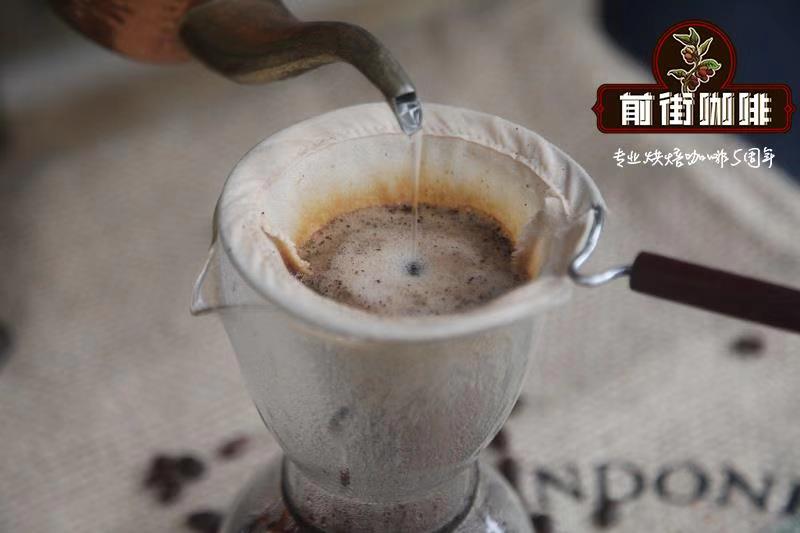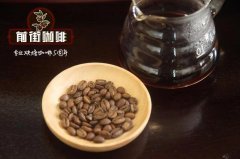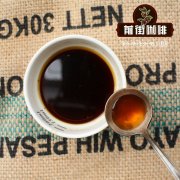How to drink Kenyan Coffee how to make Kenyan Coffee beans by hand

Professional coffee knowledge exchange more coffee bean information please follow the coffee workshop (Wechat official account cafe_style)
In front of the street, Kenya Karoguo hand Chong flavor
The coffee beans used today are Karoguto from AA, Kenya, respectively from Nyeri, Kenya. [altitude] aspect Karoguto: 1800 meters, Asalia: 1550 meters, 1750 meters, are beans at higher elevations ~ and the treatment method is also Kenyan water-washed coffee beans, beans SL28, SL34.
These beans are thick in meat and belong to high-altitude hard beans. Bourbon variants SL28 and SL34 also belong to hard beans. Generally speaking, the heat permeability of Kenyan water-washed beans is poor, and it takes a long time for heat to reach the maturity of the bean core, which is really suitable for deep-roasted coffee beans.
Big lovers of individual coffee are full of confidence in coffee-producing countries like Kenya. Not only is Kenya coffee rich in flavor: strong aroma and obvious acidity, especially after Kenya coffee is harvested, it must be uniformly purchased, tested and graded by the "Coffee Board of Kenya, CBK" set up by the government.
Coffee grades are classified by "particle size" and graded according to size, shape and weight. There are seven grades of "PB", "AA", "AB", "C", "TT", "T" and "Buni" respectively. The highest coffee beans are AA (large pellet beans left on the 7.2mm screen), A (sub-large pellet beans left on the 6.8mm sieve), B (medium pellet beans left on the 6.2mm sieve), C (all small pellet beans less than B), and PB (oval pellet beans). And too light, too small TT and T-grade beans. Grade An and B beans are mixed and exported, called AB.
The coffee beans used today are Karoguto from AA, Kenya, respectively from Nyeri, Kenya. [altitude] aspect Karoguto: 1800 meters, Asalia: 1550 meters, 1750 meters, are beans at higher elevations ~ and the treatment method is also Kenyan water washing, bean species SL28, SL34.
These beans are thick in meat and belong to high-altitude hard beans. Bourbon variants SL28 and SL34 also belong to hard beans. Generally speaking, the heat permeability of Kenyan water-washed beans is poor, and it takes a long time for heat to reach the maturity of the bean core, which is really suitable for deep-roasted coffee beans.
1. Hand punch
V60 filter cup, powder quantity 16g, grinding degree medium on the coarse side, boiling water temperature 88 ℃, ratio of powder to water 1:16, cooking time 2`15.
Technique: 30g water injection for 30 seconds in the first stage, 130g water injection in the second stage, stop water injection for a moment, and 100g water injection in the third stage.
Flavor: wet aroma with floral and citrus aromas, slightly astringent in the mouth, almonds and berries. Body is thick, with the flavor of cedar and toffee. The aftertaste is warm citrus.
Carragoto: cedar, flowers, herbs, almonds, berries are sour and well balanced.
END
Important Notice :
前街咖啡 FrontStreet Coffee has moved to new addredd:
FrontStreet Coffee Address: 315,Donghua East Road,GuangZhou
Tel:020 38364473
- Prev

Relationship between roasting degree and flavor of Costa Rican coffee beans
Professional coffee knowledge exchange more coffee bean information please follow the coffee workshop (Wechat official account cafe_style) front street Costa Rican Mozart coffee baking curve before baking a new bean, we will first learn about the bean and the flavor given by the raw bean merchant, and then according to this information to try to bake a few stoves, and then adjust according to the cup test results
- Next

How many degrees of Kenyan hand flushing is suitable for Kenyan hand flushing flavor
Professional coffee knowledge exchange more coffee bean information please follow the coffee workshop (Wechat official account cafe_style) front street Kenya Asari coffee sharing [Kenya asali] production area: Kenya Sika Thika processing plant: Asali honey processing plant altitude: 15501750 meters classification: AA TOP varieties: sl-28,sl-34 treatment: Kenya 72 hours washing [Kenya]
Related
- Beginners will see the "Coffee pull flower" guide!
- What is the difference between ice blog purified milk and ordinary milk coffee?
- Why is the Philippines the largest producer of crops in Liberia?
- For coffee extraction, should the fine powder be retained?
- How does extracted espresso fill pressed powder? How much strength does it take to press the powder?
- How to make jasmine cold extract coffee? Is the jasmine + latte good?
- Will this little toy really make the coffee taste better? How does Lily Drip affect coffee extraction?
- Will the action of slapping the filter cup also affect coffee extraction?
- What's the difference between powder-to-water ratio and powder-to-liquid ratio?
- What is the Ethiopian local species? What does it have to do with Heirloom native species?

